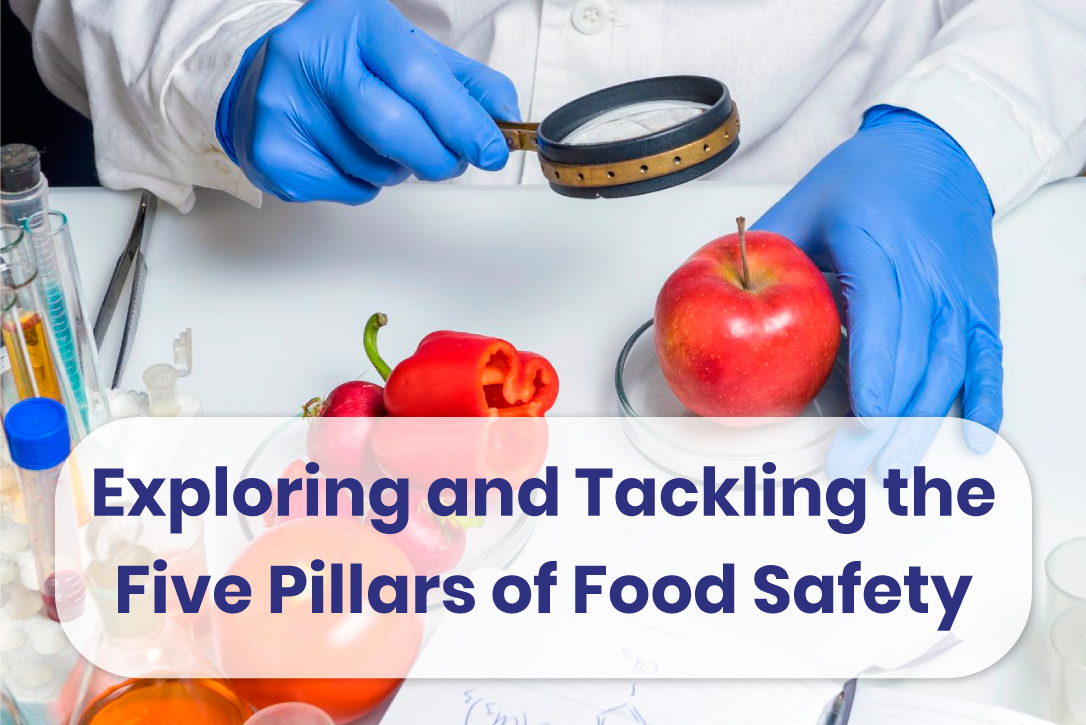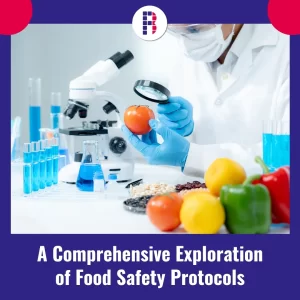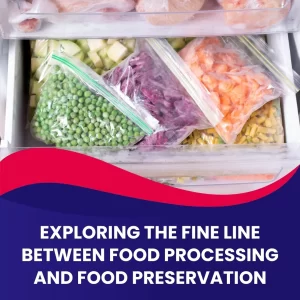Introduction:
In the intricate web of culinary delights, ensuring the safety of the food we consume is paramount. Beyond the tantalizing aromas and flavors lies a realm of potential hazards that can pose risks to our well-being. It’s imperative to familiarize ourselves with the diverse array of food safety concerns, from microscopic threats to unexpected intruders. Join us on a journey to uncover the five types of food safety hazards, explore their origins, learn to identify them, and most importantly, discover effective strategies to prevent and mitigate these risks.
- Biological Hazards:
Biological hazards, stemming from microorganisms like bacteria, viruses, parasites, and fungi, represent a hidden realm of potential danger. Salmonella, E. coli, and Listeria are just a few examples of these microscopic adversaries.
- Identification: Beyond visible signs, watch for symptoms such as nausea, diarrhea, or fever after consuming certain foods.
- Prevention: Ensure thorough cooking to eliminate harmful microorganisms. Adopt meticulous hand hygiene practices and prevent cross-contamination through separate utensils for raw and cooked foods.
- Solution: In the face of suspicion, discard the affected food and seek medical advice if symptoms persist.
- Physical Hazards:
Physical hazards involve the unintentional introduction of foreign objects into food, including glass, metal, plastic, or bones. They pose a tangible threat that can compromise the safety of what we consume.
- Identification: Rigorous inspection during food preparation or consumption is crucial to detect any foreign objects.
- Prevention: Implement stringent quality control measures in food processing and regularly inspect equipment. Utilize proper utensils and cooking methods to minimize accidental contamination.
- Solution: If a physical hazard is identified, remove the affected portion and refrain from consuming the rest. Report the incident to the food manufacturer.
- Chemical Hazards:
Chemical hazards involve the presence of harmful substances in food, encompassing pesticides, food additives, and contaminants. They pose potential risks that may go unnoticed until it’s too late.
- Identification: Stay vigilant for unusual taste, odor, or color in food and be aware of product labels and expiration dates.
- Prevention: Thoroughly wash fruits and vegetables to eliminate pesticide residues. Use food-grade containers for storage and avoid expired or damaged products.
- Solution: Suspecting chemical contamination warrants immediate contact with poison control and seeking prompt medical advice.
- Genetic Hazards:
Genetic hazards are inherent in certain foods due to their genetic makeup, including naturally occurring toxins in some plants and seafood. Recognizing these inherent risks is crucial for informed food consumption.
- Identification: Stay informed about potential genetic hazards in specific foods and recognize symptoms associated with these hazards.
- Prevention: Purchase foods from reputable sources and adhere to proper cooking and preparation methods. Stay informed about advisories related to specific genetic hazards.
- Solution: Seek medical attention if symptoms arise and report any adverse reactions to health authorities.
- Allergens:
Allergens trigger allergic reactions in sensitive individuals and can be found in common foods like nuts, shellfish, and dairy products. Understanding and managing allergens are key to preventing severe health complications.
- Identification: Scrutinize food labels for allergen information and be aware of common allergens and their sources.
- Prevention: Clearly label food products with allergen information and implement thorough cleaning procedures to prevent cross-contact in food preparation areas.
- Solution: In case of an allergic reaction, seek immediate medical assistance and, for those with known food allergies, carry an epinephrine auto-injector.
Conclusion:
In the intricate tapestry of our culinary experiences, safeguarding our health through comprehensive food safety practices is an ethical responsibility. By delving into the nuances of biological, physical, chemical, genetic, and allergenic hazards, we equip ourselves with the knowledge to make informed choices. As advocates for a healthier society, let us prioritize stringent food safety measures, from the kitchen to the marketplace, ensuring that every bite we take contributes to our well-being and not to unforeseen risks. A commitment to understanding and addressing these hazards paves the way for a safer and more delightful dining experience for all.






